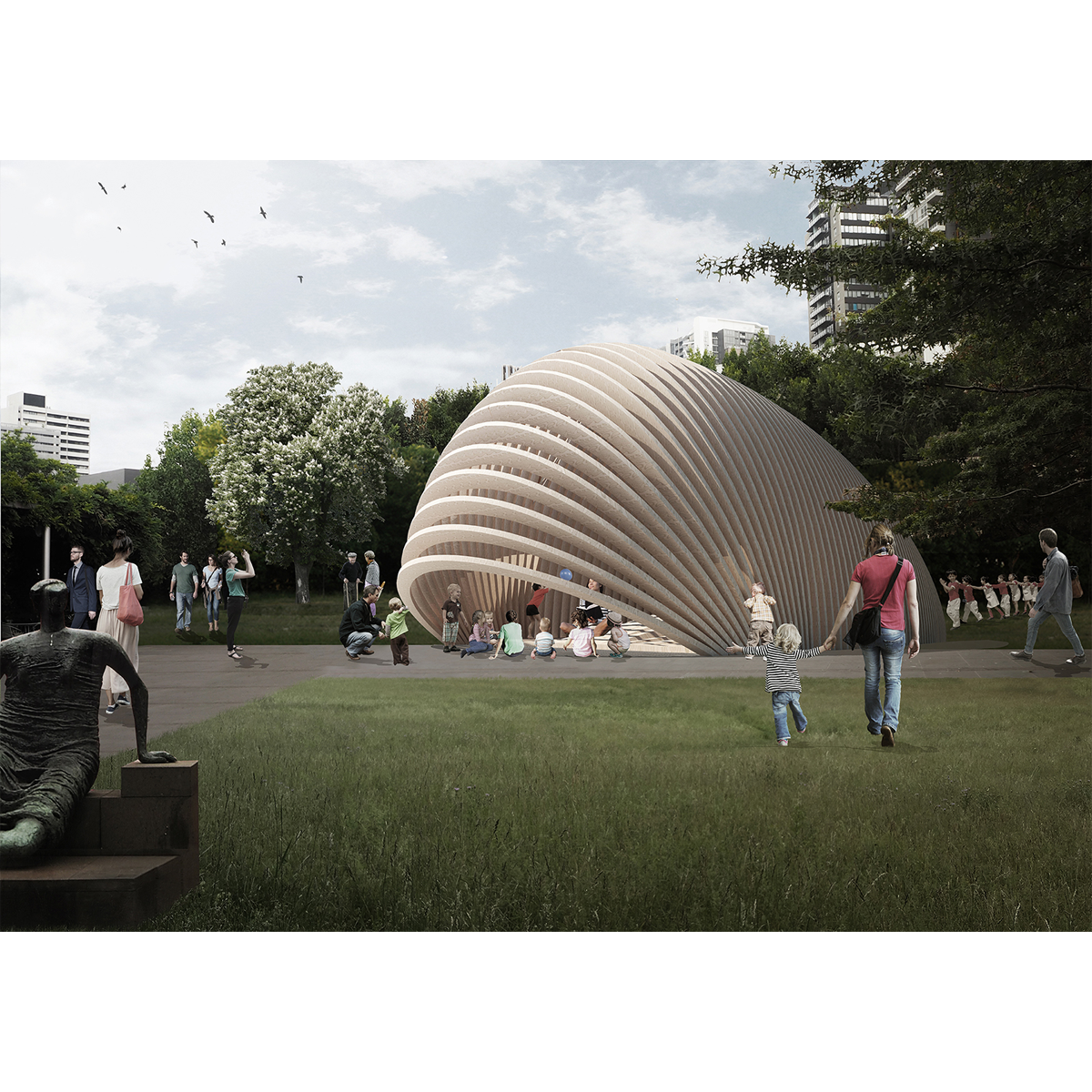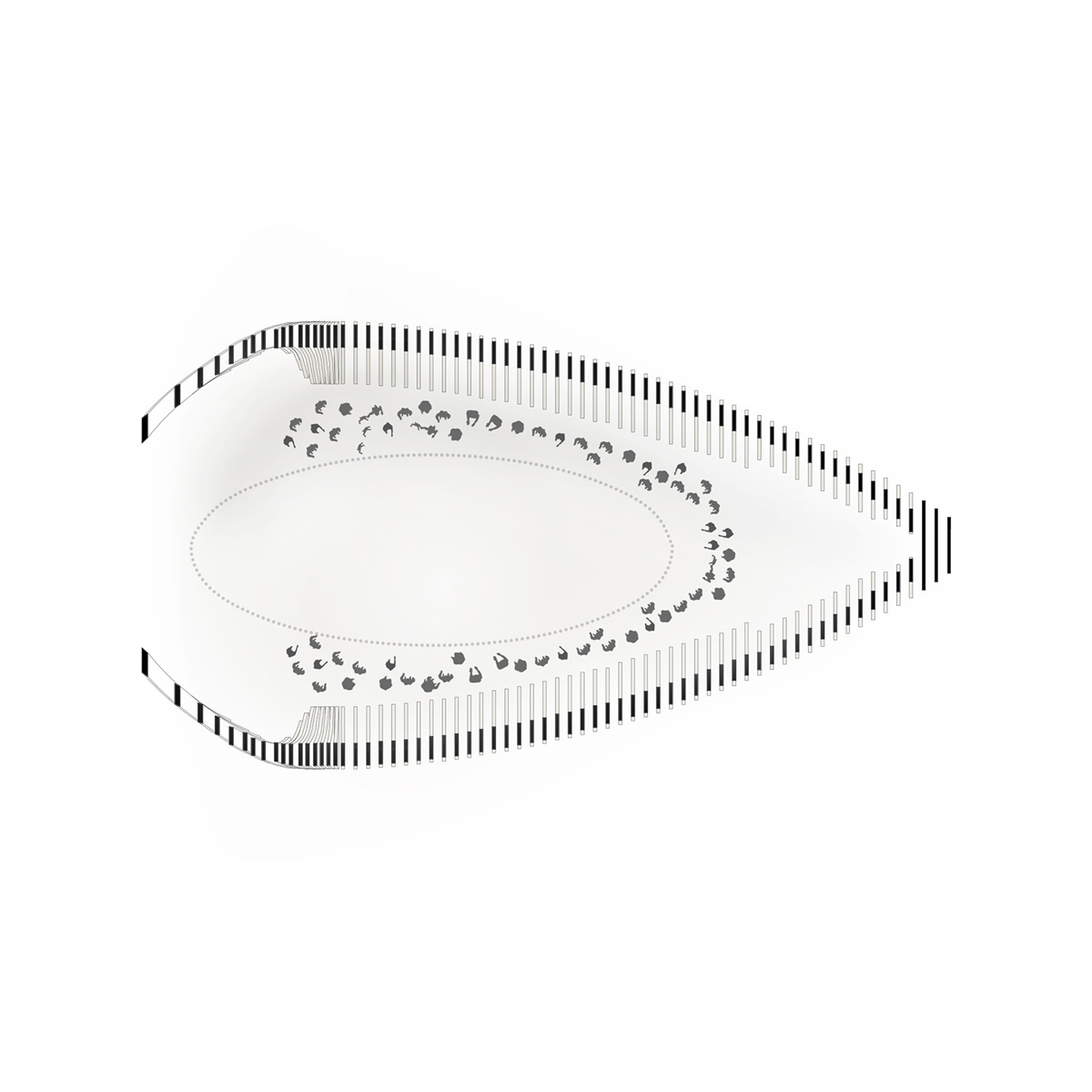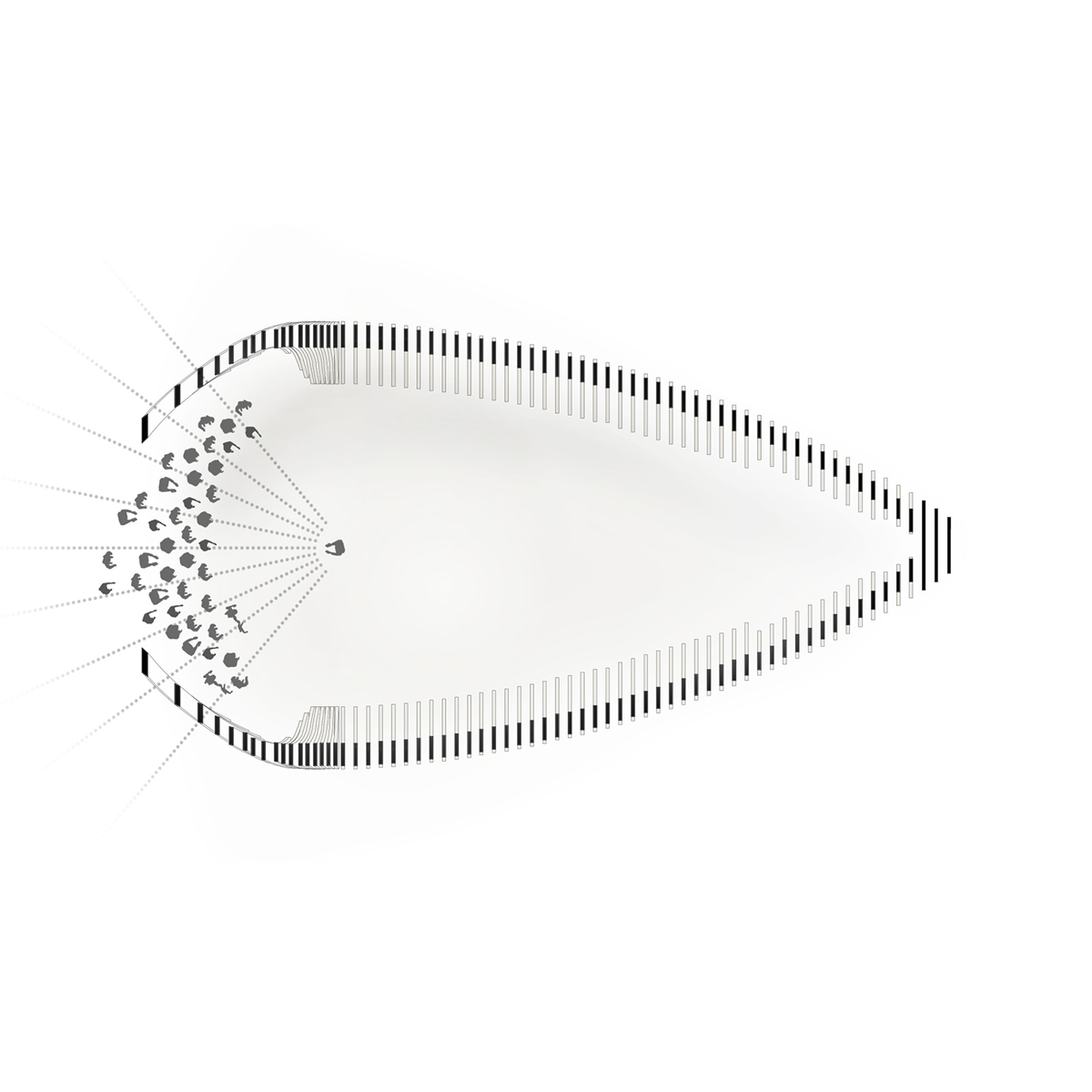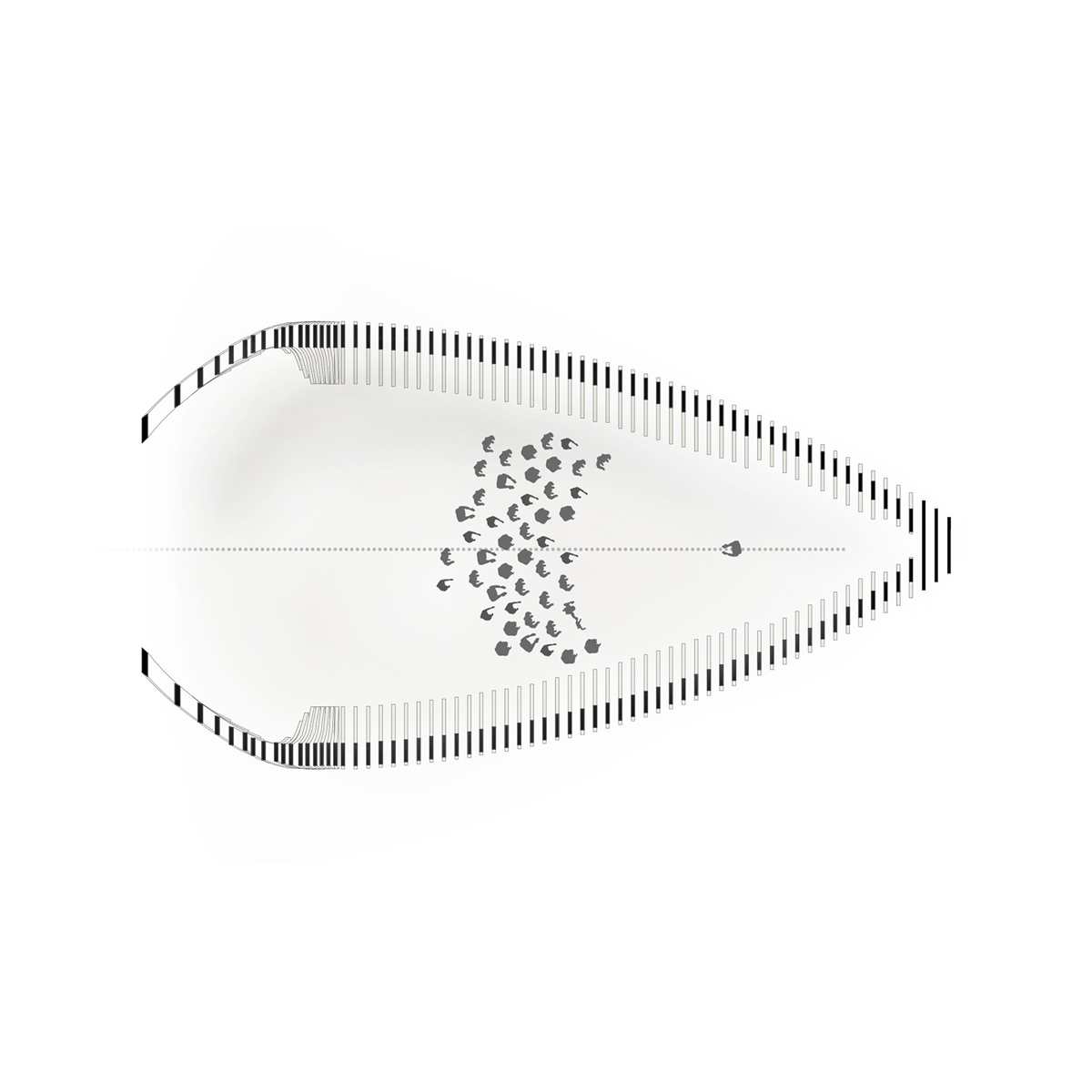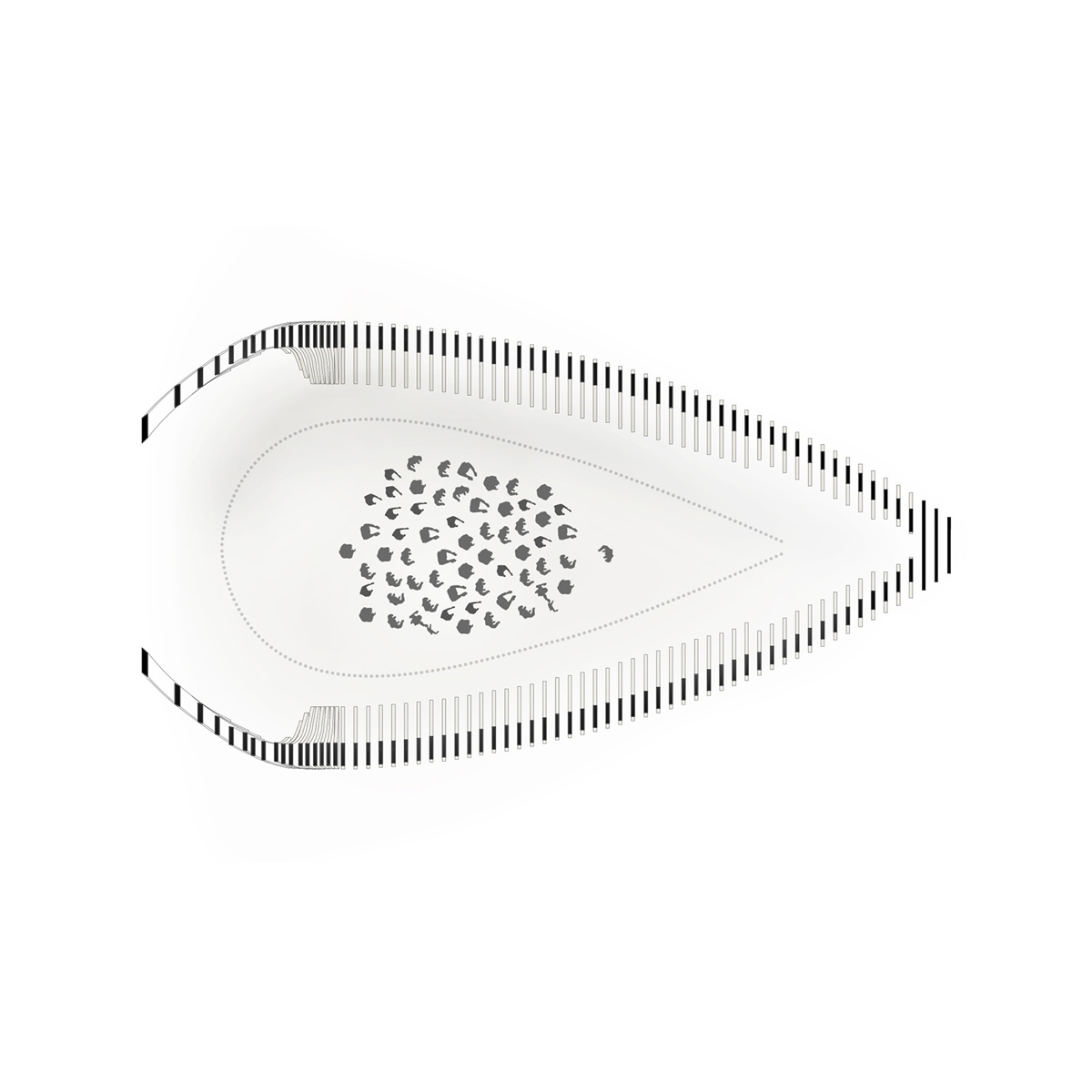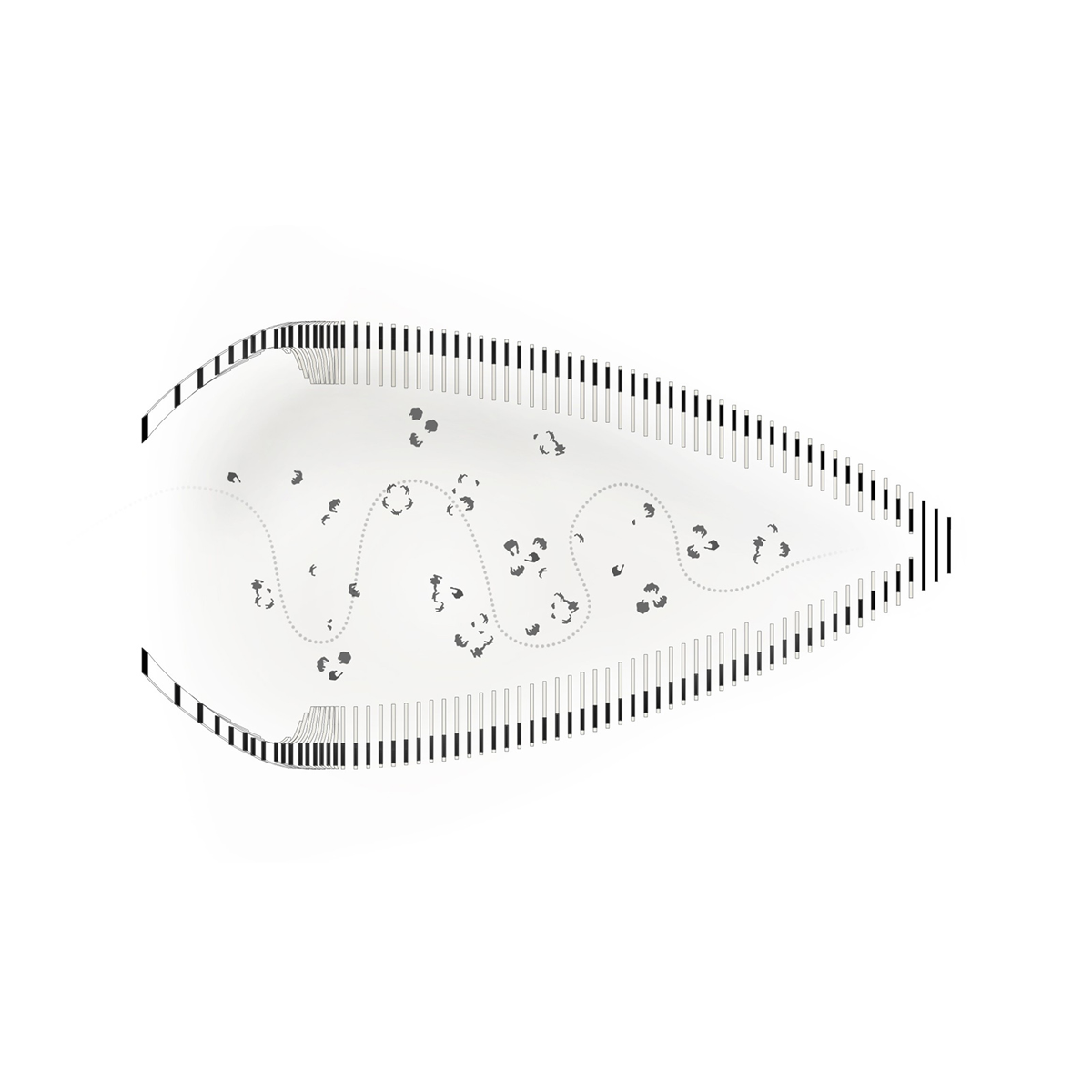A temporary pavilion that favors the meeting in a playful space totally immersed in an extraordinary garden.
NGV pavillion Melbourne
location: Melbourne, Australia
client: National Gallery of Victoria
status: 2016 competition
collaborators: Alessandro Molesini, Benedetta Braglia, Oliviero Brognoli, Alessia Fornasari
program: temporary pavillion
More than ever we feels the need to return to the direct experience between people and things. And we all feel the need for universal values but also of identity, that can bring people together because they all recognize it. A pavilion must be first and foremost a place of meeting and sharing. Technological tools allow us to live any kind of experience, but we still believe in the beauty of simplest things. Children can teach us again the curiosity, discovery, imagination, around them it creates the energy of creativity that produces innovation. Through the eaye of the children, we can all rediscover what we seek in art, architecture, design, in our world. The return to the roots comes through the world of childhood, where we can find the ability to surprise us and to imagine together.
The NGV pavilion is an architectural installation dedicated to children in Grollo Equiset Garden. It is a space open to all, but intended for recreational activities and educational workshops for children, surrounded by nature in direct contact with the spaces of the National Gallery of Victoria. It’s a building made entirely of wood that evokes the image of the belly of the whale and her open mouth that swallows Pinocchio in the famous tale of Collodi, translating an universal icon, somehow what Jung calls “archetypes of the collective unconscious”, that each of us knows. A reference is the Collodi Park (Italy) where the designer and architect Marco Zanuso together with landscape architect Pietro Porcinai realized 55 years ago a harmonious and striking ensemble that still involves adults and children in a unique experience.
The NGV pavilion is at the end of the paved parterre in the sculpture garden. Stepping out of the National Gallery, the gaping mouth of the whale invites you to enter and discover its interior space, a warm womb and mysterious as a cave. The shape of the pavilion evokes many familiar images: a vessel, a zoomorphic form, a prehistoric animal, a shell, a sand dune, a wave in the ocean, a hill to climb. The children can find inside it a space to discover and outside a shell to climb. During the day the pavilion will host readings, performances, educational workshops and activities related to the National Gallery. The pavilion can also be used at night, lightning up like a lantern, revealing bright glimpses of its interior.
The structure is inspired by the traditional system of boat construction, with wooden ribs that define the backbone and envelop the space in a continuous form. It involves the use of cross laminated timber of marine plywood that offers excellent mechanical characteristics, excellent moisture resistance and non-deformability. Combining manufacturing and digital fabrication, the ribs are formed with the use of numerical control laser-cutter, optimizing the cutting of the panels without material waste. The assembly does not require mechanical means or scaffolding and is being executed in a few hours by a team of four people, with minimal interference to the park and its activities. After installation of the platform, the ribs are connected in the top mounted and connected between them over the entire length with metallic threaded rods. The system is self-sustaining and self-balancing during installation up to the final form. Disassembly requires the same steps in reverse order. With attention to the materials life-cycle, the wood can be recycled, while the grassy parterre will be restored after dismantling.
We believe that a pavilion dedicated to the children is the best way to celebrate the first 50 years of the Grollo Equiset Garden, with functional and spectacular installation in which we can all recognize.

